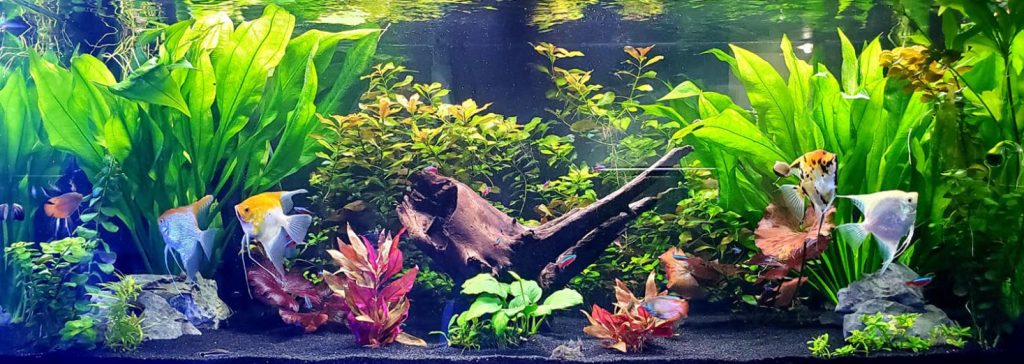
Newcomers constantly ask on social media “How do I get my pH down for my fish?”. First off, if the pH is below 8.5 you typically don’t need to bring it down for most fish. Even black water Amazonian fish do well at anything lower than 8.5 pH.
If you have an aquarium with a pH above 7.5 it is normally very difficult to get the pH down. This is because water with a pH above 7.5 normally has a lot of bicarbonates and carbonates (KH) which buffer the water. This means you must add a large amount of acid to get the pH down.
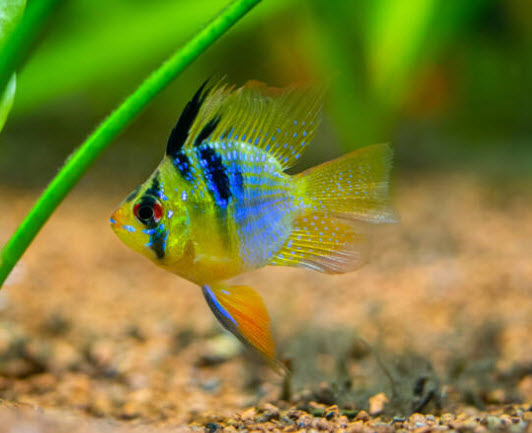
The power of KH (carbonate hardness) to buffer to a pH above 7.5 is amazing. An illustration is when I had an aquarium where I wanted to drop to a 6.6 pH for an Amazon biotope I was setting up. The aquarium was filled with only water and had vigorous aeration with multiple air stones. The water was a pH of 8.2, KH of 400 (dKH of 22) and GH of 120 (6 dGH).
I added Indian Almond leaves and waited a week. The pH held at 8.2 pH. Indian Almond leaves, oak leaves, alder cones, beech leaves and some driftwood contain tannic acid, a brown, weak, organic acid. This weak acid is totally ineffective in reducing the pH of high KH water, contrary to popular myth.
So, I added a teaspoon of phosphate acid buffer. Nothing happened, the pH held at 8.2. I added another 5 teaspoons acid buffer and the pH dropped to 7.8. One day later the pH was back to 8.2. I added another five teaspoons of acid buffer, still no permanent change. Acid buffer is very weakly acid and again not effective in reducing the pH of a high KH water.
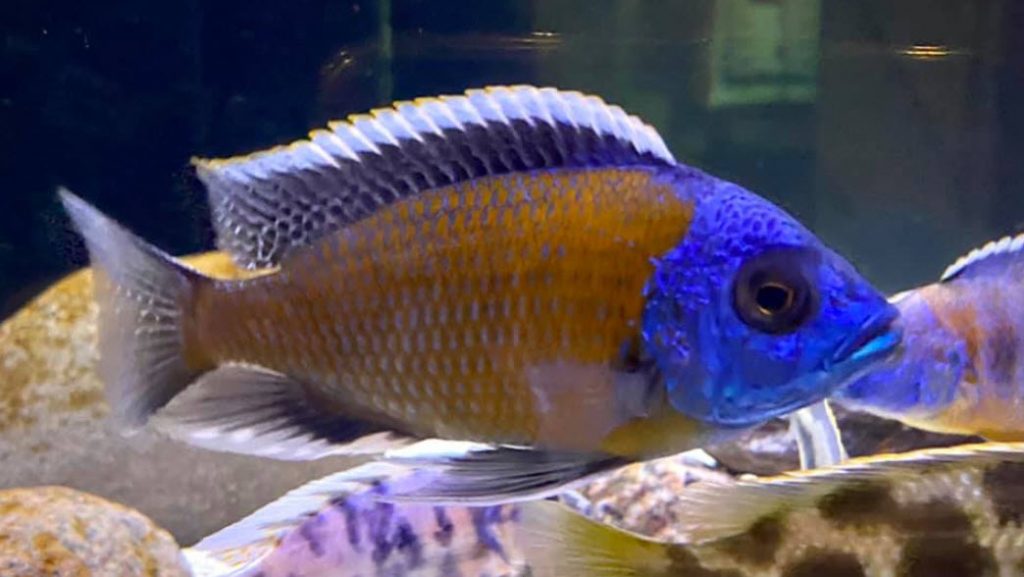
So, I added one teaspoon of concentrated hydrochloric acid and the pH dropped to 7.2. One day later the pH went back up to 8.2. So, for two weeks I added roughly a teaspoon of acid every day to the aquarium and repeated this cycle. Finally, after two weeks, the pH stabilized at 6.6. I had added almost one-third cup of concentrated hydrochloric acid to the aquarium. This amazed me.
The exact mechanism of this is simple. The acid converted the carbonate ions in the water to carbonic acid, which is simply a solution of carbon dioxide in water. Carbon dioxide TEMPORARILY drops the pH of the water. The carbon dioxide slowly outgassed to the atmosphere over a 24 hour span and the pH went back up. This is why KH is defined as the “buffering” capacity of the water. Over a span of two weeks the acidity finally came down permanently. But it took a full two weeks and a lot of acid to do the trick, even with very good aeration removing the carbon dioxide.
Now obviously if the KH is low, like below 3 KH, this buffering effect is much less and it is much easier to drop high pH. But water with a low KH and a high pH is rather unusual.
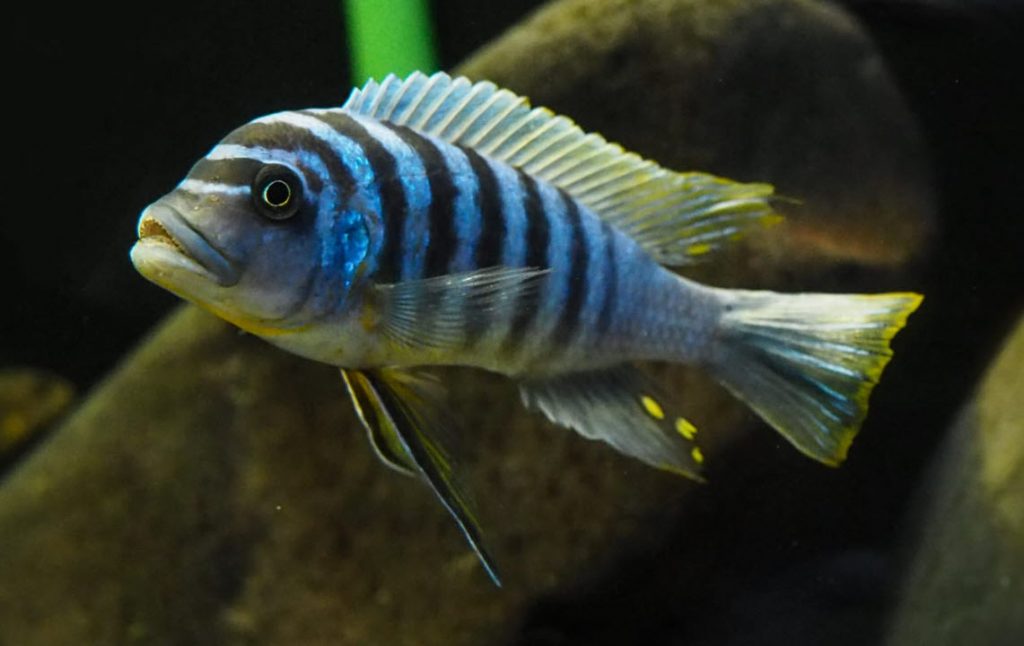
Methods to Drop pH Effectively.
Sometimes there are legitimate reasons to drop the pH, for instance if the pH is over 8.5. One person on social media had a pH of 9.2, which is a situation which must be remedied. Ammonia becomes very toxic over 8.5 pH.
There are only three real ways to effectively drop the pH, garbage bin treatment, RO water and rainwater:
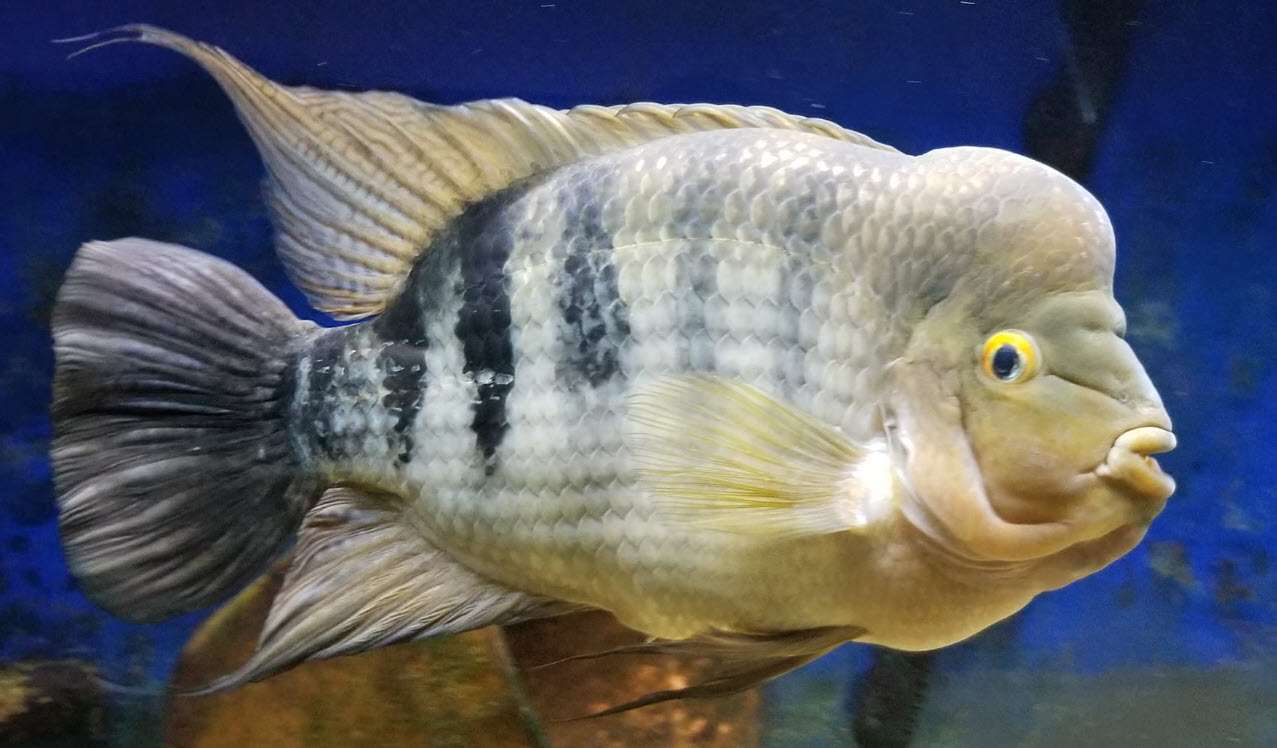
1, Garbage Bin Treatment Center
To do this one needs to set up a treatment center the size of the amount of water used for water changes. This can be a spare aquarium, a plastic bin, a garbage bin or even a barrel. Then follow this “titration” process
- Fill with water.
- Add one teaspoon concentrated hydrochloric acid (muriatic or pool acid) per twenty-five gallons of water for every half a pH over 8.0 (i.e. 8.5 pH gets one teaspoon, 9.0 two teaspoons).
- Aerate the container with a large air stone and air pump.
- Wait two days for the resulting carbon dioxide to gas out.
- Measure the pH
- If the pH is above 8.0 repeat the process only with less acid.
- Continue the process with continually decreasing amounts of acid.
- If the pH is below 8.0 you are good to go
Do not try to “chase” pH below 8.0 pH. You will invariably end up with something like 5.8 pH, which isn’t productive. Note once you know the amount of concentrated acid required you don’t need to wait the two days and repeat.
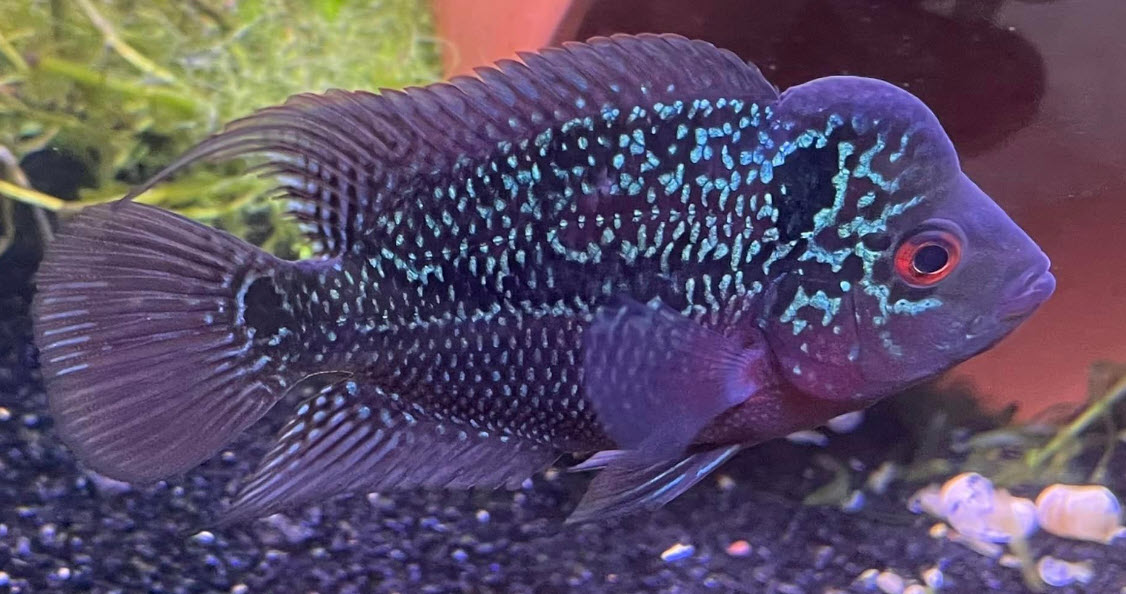
Any hydrochloric acid will do the job. And by adding hydrochloric acid to high GH and KH water you will simply convert calcium carbonate to calcium chloride (a harmless stable “salt”) and carbon dioxide. Calcium chloride will not evaporate or change. It does take up to a week (90% will be in two days) for the carbon dioxide to work its way out of the system. So expect the pH to rise over the span of a week after adding the hydrochloric. But after a week the pH will be very stable.
Note that concentrated acid requires heavy duty plastic gloves and goggles to use. Follow all the precautions on the label. Concentrated acid can burn very severely. Always add the acid to the water. Never add water to acid.
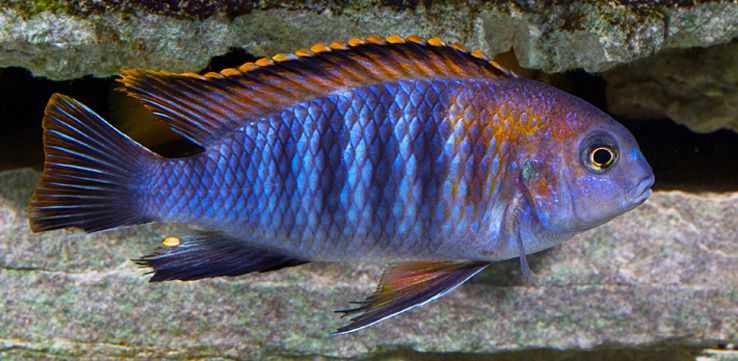
2, RO water
This needs a RO (reverse osmosis) set up. RO will drop the pH of water. But it is wasteful of water and expensive if you pay for your water. Note some use RO/DI units (reverse osmosis, deionization) units. This is counter productive as the small amounts of ions removed by the deionization units are needed by fish.
Note also that the membranes can need frequent changing if the water is very hard. And note RO units and chloramine in the water doesn’t mix very well. Activated carbon is of limited use with chloramine (it need a long residence time and the carbon must be replaced every two weeks) and chloramine will destroy RO membranes.
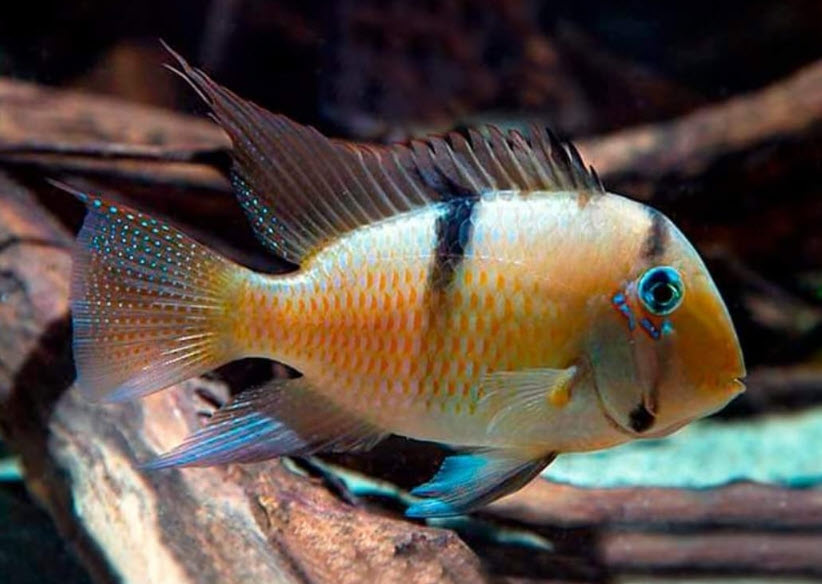
For a small aquarium it is possible to buy RO water or distilled water in the store. Note that RO and distilled water typically benefit by adding some salt (table salt, baking soda and/or Epsom salts) back into the water, up to 70 to 150 TDS. Even Amazon fish cannot survive in truly reverse osmosis water (< 1 dGH).
Also note that if one mixes 50% RO water in water which is 8.6 pH you might see a decrease to 8.4 pH if one is lucky. This all has to do with the buffering mentioned above. One must add 100% RO water and bring it up to 70 to 150 TDS.
3, Rainwater
Rainwater is a perfectly acceptable source of soft water. There are no toxins in it, contrary to popular myth. It is always a good idea to strain it through cheese cloth to remove mosquito larvae.
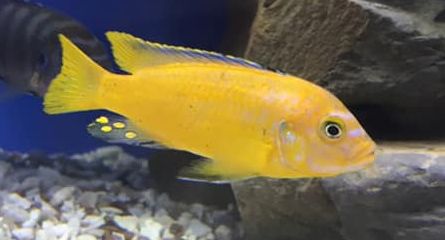
pH in Depth
For those interested in a more in depth discussion of pH click on the following links:
Link to general discussion of pH:
4.4. Aquarium pH
Link to a more in depth discussion of pH and how unimportant it is in the aquarium:
4.4.1. pH is Not Important
A difficult to understand part of pH is the concept of “buffering”. Some consider it important to buffer an aquarium.
4.4.2. Buffering the Water
pH goes up and down constantly in an aquarium because of carbon dioxide and how it interacts with water. This is another relatively complex topic:
4.4.3. Carbon Dioxide and pH
There are situations when one has a pH lower than 6.5 and one needs to raise the pH. This link covers how to safely raise the pH of water
4.4.5. Raising pH
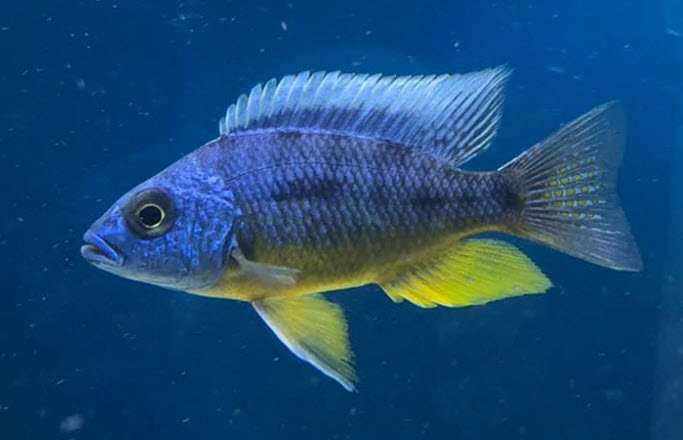
Many people think that fish which have been bred in a wide range of waters can thus tolerate a wide range of water. This is simply a myth.
4.7. Fish Tolerance to pH
And many think that fish must be kept in a very stable pH or temperature and that rapid changes are detrimental to the fish. This is yet another myth.
4.8. Stability Isn’t Important
.
Return to Temperature, pH, KH and GH
.
Aquarium Science Website
The chapters shown below or on the right side in maroon lead to close to 400 articles on all aspects of keeping a freshwater aquarium. These articles have NO links to profit making sites and are thus unbiased in their recommendations, unlike all the for-profit sites you will find with Google. Bookmark and browse!
.

Jenny Drennan says
Thanks Dave. I very nearly bought an RO system today as I was googling for hours on end. It’d seem like such a waste when so little is actually in my water. I presume its phosphates to protect the pipes. I obsess with numbers, old habit of being a pharmacist for so many years but it must be said my chemistry skills are a little rusty these days lol.
Dave says
In reply to Jenny ….. The Facebook groups are wrong. Bettas do fine in any pH from 6.5 to 8.5. That being said if it would make you more comfortable low GH/KH water can be acidified by adding vinegar.
Jenny Drennan says
I’m hoping someone can help me. I think I may be obsessing about pH. I have 5 bettas. The FB groups insist a pH of around 6,5 is the only way to keep them happy. My tap water is barely 0.5 kH and 0.5 GH, however, the pH swings between 8.3 and 8,5. How do I safely lower it? Do I just add the hydrochloric acid?
Brad - UK says
@Heather Jackson
That is not because of PH.
I have added RO water and very hard tap water to my tank at varying degrees, and there is no fish reaction. There is no way water change of those degrees is going to make fish go nuts – or die. If fish are going nuts, then there is something in the water. And it is not PH discrepancies.
Heather Jackson says
I’m sorry but I have to disagree. Over a year ago the city changed our already very hard water to extremely hard. Now when water first comes out the tap the pH max’s out on the API freshwater kit and then the next day the pH drops to 6.5. The first several times I did a water change without realizing this I had more than half of my fish going nuts as I was changing the water and the last time one of them died within a couple hours. Since I’ve added neutralizer to my water this has not happened once.
Anonymous says
That is not to say you must pump CO2 in your tank. The natural processes (respiration of fish and plants, degradation of organic matters) in your tank is enough to produce the CO2 that can lower pH to a stable point.
Meyrick says
We have the same water! Haha.
Mine is 21.7-22 dKH, 6 dGH, 8.2-8.4 pH
I have done the same experiment as you did and have gotten the same results and found out that as long as there is KH in your water, the pH can never be below 7. Using muriatic acid (or any other acid) to lower the pH is the wrong approach, but rather you can use the acid to lower the KH up to the point that it can remain stable for the fish (4-6 dKH is good enough) but even then your pH can still read up to 8. The only way I know that pH can lower below 7 even with KH still present is with CO2 as carbonic acid has no effect on the KH.